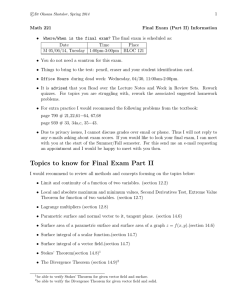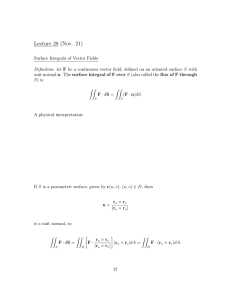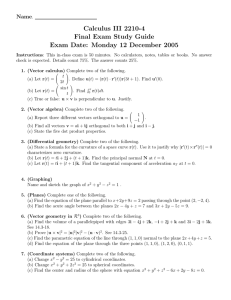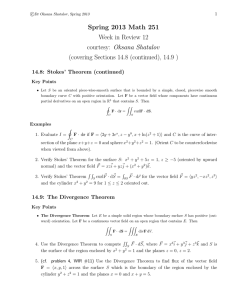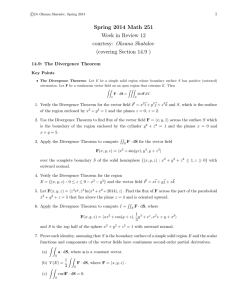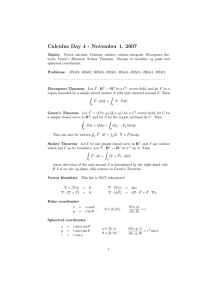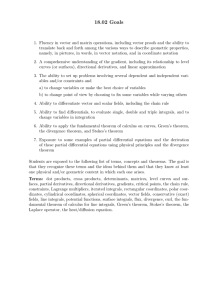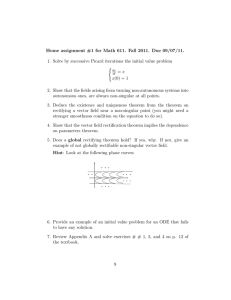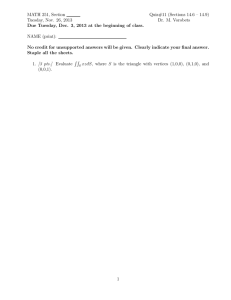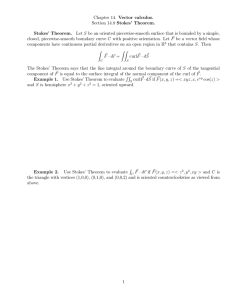Math 251. WEEK in REVIEW 11. Fall 2013 I
advertisement
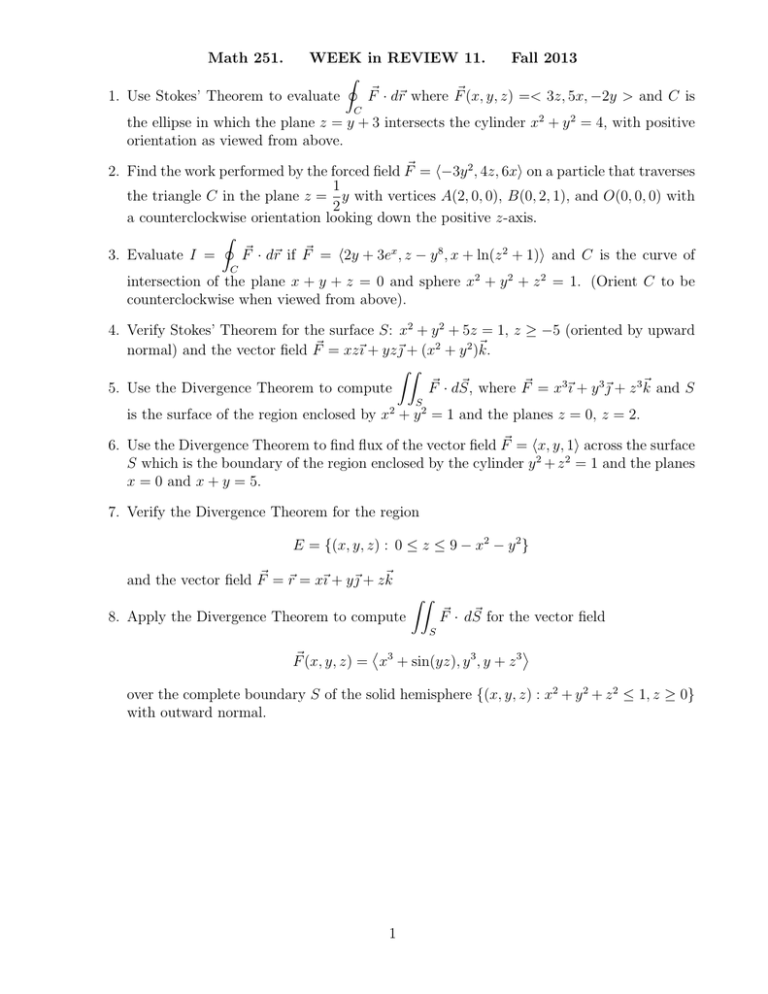
Math 251.
WEEK in REVIEW 11.
Fall 2013
I
1. Use Stokes’ Theorem to evaluate
F⃗ · d⃗r where F⃗ (x, y, z) =< 3z, 5x, −2y > and C is
C
the ellipse in which the plane z = y + 3 intersects the cylinder x2 + y 2 = 4, with positive
orientation as viewed from above.
2. Find the work performed by the forced field F⃗ = ⟨−3y 2 , 4z, 6x⟩ on a particle that traverses
1
the triangle C in the plane z = y with vertices A(2, 0, 0), B(0, 2, 1), and O(0, 0, 0) with
2
a counterclockwise orientation looking down the positive z-axis.
I
3. Evaluate I =
F⃗ · d⃗r if F⃗ = ⟨2y + 3ex , z − y 8 , x + ln(z 2 + 1)⟩ and C is the curve of
C
intersection of the plane x + y + z = 0 and sphere x2 + y 2 + z 2 = 1. (Orient C to be
counterclockwise when viewed from above).
4. Verify Stokes’ Theorem for the surface S: x2 + y 2 + 5z = 1, z ≥ −5 (oriented by upward
normal) and the vector field F⃗ = xz⃗ı + yz⃗ȷ + (x2 + y 2 )⃗k.
∫∫
⃗ where F⃗ = x3⃗ı + y 3⃗ȷ + z 3⃗k and S
5. Use the Divergence Theorem to compute
F⃗ · dS,
S
is the surface of the region enclosed by x2 + y 2 = 1 and the planes z = 0, z = 2.
6. Use the Divergence Theorem to find flux of the vector field F⃗ = ⟨x, y, 1⟩ across the surface
S which is the boundary of the region enclosed by the cylinder y 2 + z 2 = 1 and the planes
x = 0 and x + y = 5.
7. Verify the Divergence Theorem for the region
E = {(x, y, z) : 0 ≤ z ≤ 9 − x2 − y 2 }
and the vector field F⃗ = ⃗r = x⃗ı + y⃗ȷ + z⃗k
∫∫
⃗ for the vector field
F⃗ · dS
8. Apply the Divergence Theorem to compute
S
⟨
⟩
F⃗ (x, y, z) = x3 + sin(yz), y 3 , y + z 3
over the complete boundary S of the solid hemisphere {(x, y, z) : x2 + y 2 + z 2 ≤ 1, z ≥ 0}
with outward normal.
1
